In 2016, MB saw an opportunity in renewable energy - a hot business segment at that time in the international market. However, at that time, in Vietnam, renewable energy was still a vague concept and how to do business profitably was still a big question mark.
Instead of waiting, as soon as the idea for a new business area flashed, the MB team started to survey. Over the next three months, MB leaders traveled to many countries to study how to deploy this area.
Mr. Pham Nhu Anh, then Director of MB's Major Customers, led a delegation to China - a country that produces more than 70% of the global supply of wind and solar modules. Here, they studied how China operates its endless wind farms, collected data and consulted with experts. From there, MB became more certain about its decision: 'Doing renewable energy is not easy, but MB can completely control the risks'.

Nearly a decade later, MB continues to be one of the first banks to disburse capital to Xanh SM - Vietnam's first electric taxi company. Although doing something new is always difficult, if you only rely on old business segments, growth will be very challenging. In a conversation with us, Mr. Pham Nhu Anh shares how MB faces new business opportunities, risk control strategies, and forecasts challenges for the financial industry in 2025.

- Instead of traditional industries, MA chose to disburse funds for renewable energy and electric vehicles – new but risky fields. What motivated the bank to trust these projects?
MB always aims to find new directions to enhance competitiveness and sustainable development, especially in the context of highly competitive traditional business sectors. As a joint stock commercial bank, MB constantly innovates by expanding into business segments such as green finance and developing sustainable business models.
Instead of focusing on price competition, MB focuses on bringing the best value to customers through green financial products and new products that are in line with the general development trend. This is not only a new opportunity but also helps MB improve its position and make its mark in the market.
In 2016-2017, when we realized that renewable energy was a new trend, while many banks were still hesitant due to concerns about risks and low profit margins, MB decided not to give up. Before investing in renewable energy, we spent three months researching, surveying the field and consulting international experts.
Study trips to China, Japan and the Philippines helped MB better understand how to implement renewable energy projects and determine that these projects are both environmentally friendly and risk-controlled.
The electric vehicle sector is similar. Before deciding to lend, MB did due diligence and traveled to the US to survey products like Tesla.
- How did you convince leaders to believe in green credit and electric vehicles, when the potential risks are so great?
I believe that being skeptical or open to an issue depends on whether the organization has enough information and knowledge to evaluate it. At MB, we always encourage our team to research, evaluate and evaluate carefully. What we fear most is not knowing clearly what we and the organization are doing.

With all the information and basis, everyone agrees with our decision. Banking is not a business based on emotions, but all decisions are made based on knowledge, data and practical experience. Investing in a new field requires more time to research and careful decision, but we always discuss and assess the risks to reach the highest consensus.
- What proportion of green credit currently accounts for in MB's loan portfolio?
Currently, MB's green credit ratio accounts for about 8-9% per year, higher than the average of major banks in the world . From 2020 to 2024, MB's green credit scale has increased about 4.5 times, from VND 14,500 billion to more than VND 65,000 billion.
With the goal of reaching a debt balance of one million billion VND next year, if MB continues to maintain the proportion of green credit debt, the absolute number will be very large.

- Many people are concerned that low interest rates in green credit may negatively impact bank profits. What is your opinion on this issue?
Green credit cannot be measured solely by profit. This is a business segment that brings community value, supports environmental protection and promotes sustainable development. Green credit is a form of long-term investment, aiming to build a green economy and minimize negative impacts on the environment. Through green projects, MB not only accompanies customers but also contributes to shaping a sustainable future for the whole society.
Up to now, MB leaders such as Lieutenant General Pham Tuan, Senior Lieutenant General Truong Quang Khanh, Senior Lieutenant General Le Huu Duc, and now Colonel Luu Trung Thai, have all run the bank with a philosophy of dedication and responsibility. MB always advocates investing and lending to projects that bring practical benefits to the environment and society, contributing to the goal of national and international sustainable development.
With this motto, green credit for environmentally friendly fields is always part of MB's long-term strategy. These decisions are not spontaneous but have been implemented systematically and consistently over many years.
Each program receives consensus from shareholders, from strategic orientation to funding allocation from after-tax profits, affirming our commitment to creating a sustainable future. 

- In addition to green transformation, MB is also one of the banks investing heavily in digital transformation. Is this the time for banks to start "reaping the fruits"?
In recent times, MB has invested a lot of resources and tens of millions of USD each year in digital transformation. This is not only a long-term strategy, but also demonstrates our commitment to promoting the digitalization of the banking industry in Vietnam.
Currently, MB serves more than 30 million customers, of which about 99% of transactions are conducted via digital channels. MB's roadmap by the end of 2024 is for revenue from digital channels to account for more than 30%. It is expected that by 2025, this rate will reach about 40%, and the target by 2026 is for 50% of revenue to come from digital channels.
MB believes that the current time is the "first harvest" stage after continuous digital transformation efforts. However, we realize that this is just the beginning.
- Not only MB, but all banks in the system are participating in the digital transformation race. So how can banks create a competitive advantage for themselves?
In the era of the flat world, when information becomes public, the market can apply it very quickly. Especially with digital products, learning and imitation are not difficult. If I have an idea today, in a short time, competitors can also come up with similar products. However, I believe that MB still has its own factors to create a difference.
An important factor is technology mastery. Banks can develop or outsource technology, and this greatly affects the speed of product development and digital transformation capabilities. If banks master technology, the time to implement ideas and develop products will be shortened. On the contrary, if they depend on partners, the speed of implementation and business flexibility will be limited.
At MB, we are 90% self-sufficient in core platforms and technologies. However, there are still some copyrights and technologies that the bank needs to purchase from partners to continue building and developing new products and technologies.

The number of customers is the factor that reflects who is doing the best in this field. It is difficult to affirm that MB is better at digital transformation than other banks, because it is the customers who make the correct assessment. The experience and results that customers receive will prove who is doing the digital transformation more effectively.
The market changes very quickly and if you stop, your competitors will immediately surpass you. Therefore, digital transformation must be a continuous process, constantly changing and adapting to meet customer needs quickly and accurately.
- You shared that the best digital converter is the one who meets customer needs quickly and accurately. What has MB done to solve this problem?
This is not an easy task. Often, what we think will be successful turns out to be less than expected, and seemingly simple ideas are warmly received by customers.
Three years ago, when we introduced the idea of a Tet prayer on the application, we just thought it was a fun initiative. But in fact, during the last days of the year, people were very excited to turn on the prayer on the MB application. Similarly, when MB first introduced the beautiful account number to the market, this created a fever.
However, there are also ideas that we think are reasonable but are not successful. Although they seem to be very suitable for the market, in reality, customers do not accept them.
To help the MB team always have ideas to develop digital channels, MB has built a business block specializing in digital banking. This team consists of about 300 young employees, specializing in creating digital business products.
They will coordinate with more than 1,500 IT staff and thousands of outsourced employees to ensure the products are deployed effectively. In particular, this team always works closely with the traditional Bank's business team to grasp the market's needs in the best way. The process of continuous testing, analysis and improvement based on customer feedback is the key to MB's continuous innovation.


- After half a decade of maintaining double-digit growth, why has MB set a cautious profit growth target of 8-10% in the past two years?
Over the past 5 years, MB has maintained a strong growth rate thanks to its solid business foundation, clear strategy and trust from customers. However, this year, MB's profit growth target is determined on a cautious basis, in line with the current economic and social context.
First of all, the global macro landscape is facing many unpredictable fluctuations. Factors such as geopolitical conflicts and the US-China trade war are putting pressure on global financial markets.
In addition, the domestic economic environment is also posing significant challenges. The Government and the State Bank aim to maintain low interest rates to support economic growth, which has affected banks' net interest margins (NIMs) in 2024 and will continue to have a strong impact in 2025. At the same time, banks need to increase risk provisions to protect the system from potential fluctuations.
In addition, MB is currently prioritizing long-term investment, especially in technology and human resources. Being ready to receive and restructure a zero-dong bank requires careful preparation in all factors, from finance to operational capacity.
We believe that setting a more modest growth target this year is not a slowdown but a prudent move, helping MB maintain stability and be ready to welcome sustainable development opportunities in the future.

- Profit margin is decreasing in the context of bank expansion, how does MB reduce management costs?
As an organization grows and expands, management becomes increasingly important. To effectively manage a bank with many branches and customers spread across many geographical areas, technology is a key factor.
The role of people in an organization is still very important, because they are the factors that help build strategies and develop directions. However, technology plays a complementary role, helping to optimize management capabilities, especially when the bank is as large as MB.
Over the past 5 years, MB has been successful in its digital transformation, helping to improve management efficiency. Although MB's scale has exceeded the 1 quadrillion VND mark, the bank only has more than 11,000 employees. Meanwhile, banks of the same rank have a much larger number of employees. Technology has helped MB increase labor productivity continuously by 10% to 15% each year in recent years.
The more technology develops, the easier and more effective management becomes, and at the same time creates a great driving force for development. In the future, MB will continue to promote the application of technology in management and operation. This is the decisive factor for success in the next stage.
- How do you evaluate the growth potential of the banking industry this year?
Over the past two years, the economy has faced many difficulties, as shown by the increasing bad debt ratio and the lack of a clear improvement in the real estate market. However, this year we see a very positive signal as the Government is determined to maintain GDP growth above 8%. In addition, bottlenecks in legal policies are also being removed, which will help the economy to make a strong breakthrough.
If these bottlenecks are resolved, the real estate market will become vibrant again, cash flow will circulate better, thereby helping the banking industry develop more strongly.
Based on the macroeconomic situation, we aim for high growth in total assets and outstanding loans. However, we remain cautious in terms of profit targets, waiting for positive signals from the market. If the market is favorable, we believe that profit growth will be in line with the growth in total assets and outstanding loans after two years of decline.

Source: https://www.mbbank.com.vn/chi-tiet/tin-mb/ceo-mb-dau-tu-dien-gio-tham-quan-trung-quoc-giai-ngan-xe-dien-tim-den-tesla-2025-2-7-16-5-15/5139



![[Photo] Many young people patiently lined up under the hot sun to receive a special supplement from Nhan Dan Newspaper.](https://vphoto.vietnam.vn/thumb/1200x675/vietnam/resource/IMAGE/2025/5/18/6f19d322f9364f0ebb6fbfe9377842d3)


![[Photo] Ready for the top competitions of Vietnamese table tennis](https://vphoto.vietnam.vn/thumb/1200x675/vietnam/resource/IMAGE/2025/5/18/9c547c497c5a4ade8f98c8e7d44f5a41)
![[Photo] Party and State leaders attend the special art program "You are Ho Chi Minh"](https://vphoto.vietnam.vn/thumb/1200x675/vietnam/resource/IMAGE/2025/5/18/6895913f94fd4c51aa4564ab14c3f250)





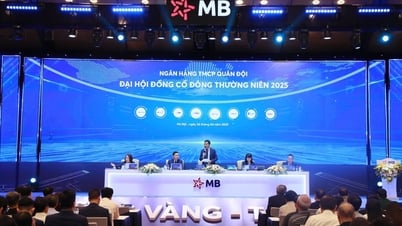

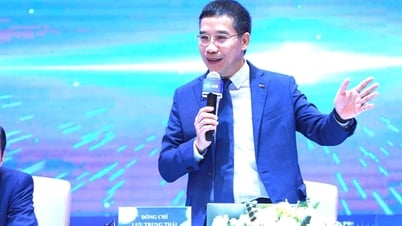
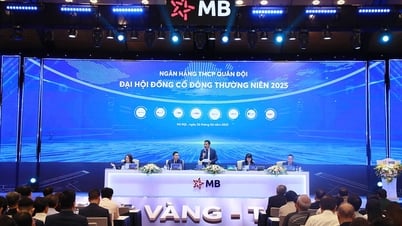

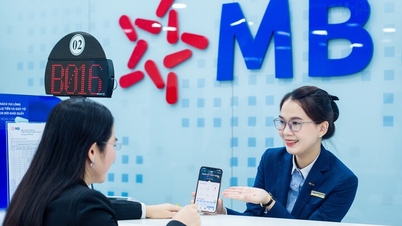












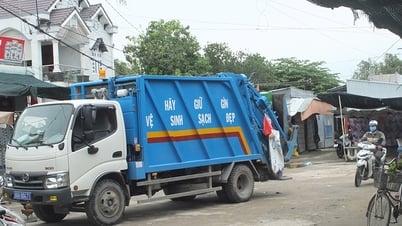

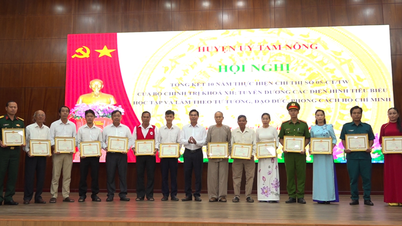

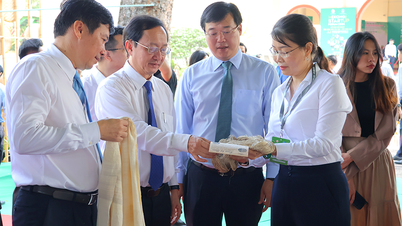





























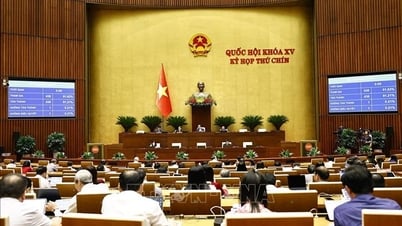


















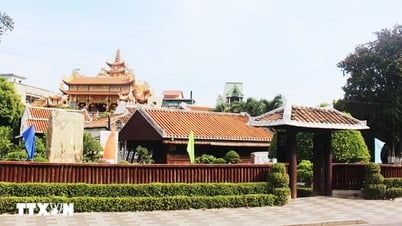

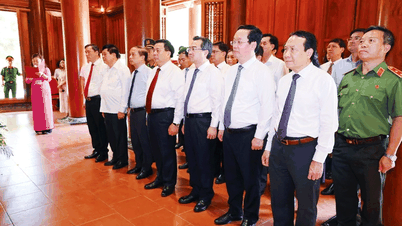















Comment (0)